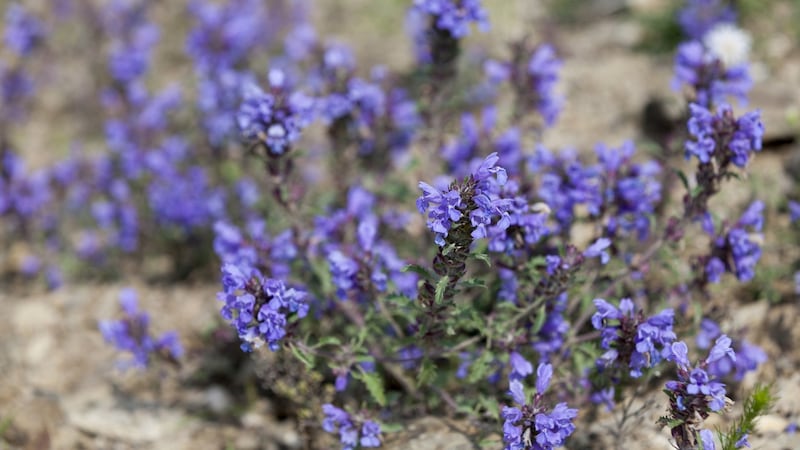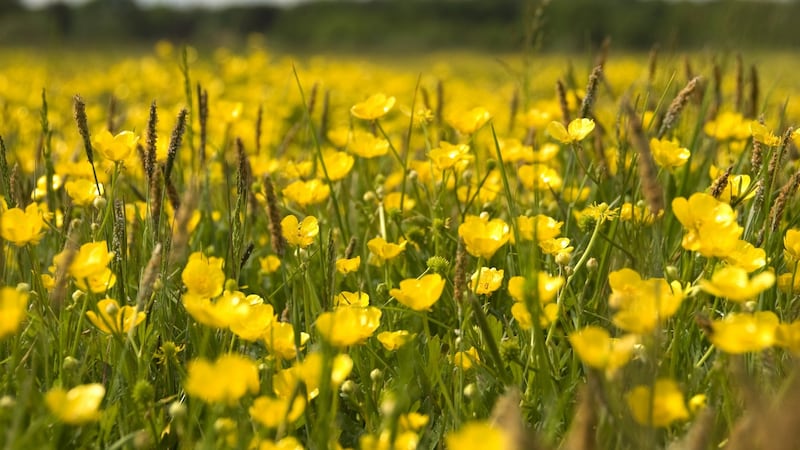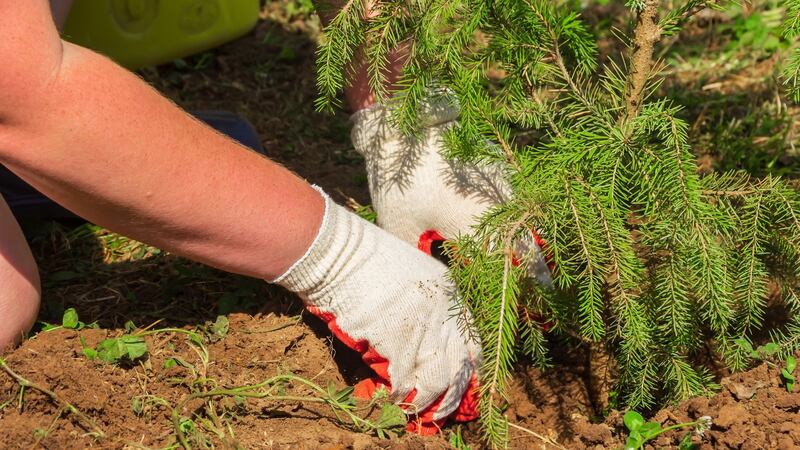Relationships are complicated. Just consider weeds, that vast, rambunctious group of plants capable of provoking the gamut of emotions in most gardeners: from fear and loathing (step forward Japanese knotweed, the invasive, non-native perennial weed capable of undermining building foundations) to admiration (think fields of buttercups in full golden flower) to affection (there’s something irresistibly charming about the dainty, carpet-forming, evergreen known as “mind-your-own-business”, a common weed in many Dublin gardens).
Even the thorny question of defining exactly what it is that makes a weed a weed is a vexatious one. The classic answer – probably the most useful from the gardener’s point of view – is that it’s simply a plant in the wrong place. So the dandelion that self-seeds into a lovingly-tended flower border is a weed while the dandelion that grows in a wild corner of the garden is not. But if a summer lawn filled with daisies is a joyous sight to many (I count myself among them) while for others it’s reason enough to reach for chemical weedkillers, then what constitutes the “wrong place”?

Thankfully, there's been an enormous cultural shift in recent years in our attitude to what the nature writer Richard Mabey (author of Weeds: In Defence of Nature's Most Unloved Plants and one of their most eloquent advocates) famously described as these "outlaw plants". This includes a growing awareness of the invaluable role that weeds play in supporting biodiversity by providing food and habitats for wildlife, as well as a recognition of the long-lasting harm caused by the usage of common garden herbicides such as glyphosate.
Aesthetic value
There’s also a burgeoning appreciation of weeds’ aesthetic value (check out Jack Wallington’s recent book Wild About Weeds), their vital role in protecting soils from erosion and degradation, and their long history of use in herbal medicine. An example is the ubiquitous perennial weed known as ground elder (Aegopodium podagraria), which many gardeners resent for its greedy, invasive growth habit. But the very same edible plant has been cultivated in monastic gardens for centuries as a cure for gout (and the reason why it’s also commonly known as goutweed or bishop’s weed).
Other examples include the common dandelion, which has long been prized for its powerful diuretic properties; the pretty purple-flowering perennial garden weed known as self-heal (Prunella vulgaris), which got its name because of its long history of use in folk medicine; and the jaunty, spring-flowering celandine which is called pilewort for reasons that I hope I don’t need to spell out.

From a gardening point of view, it’s worth pointing out that weeds also serve as hugely useful indicators of different soil types and growing conditions. For example, nettles indicate a fertile soil, creeping buttercup and wild garlic a damp, heavy soil, while plantain and sheep’s sorrel indicate an acid soil. Germination of weed seeds in mid-spring is also a very useful indicator for gardeners that conditions are suitable for direct sowing outdoors.
But if all the above is true, why bother to weed? For a variety of good reasons. First and foremost is to preserve and nurture soil fertility and to support vigorous, healthy growth. Otherwise, left unchecked weeds growing in a flower or vegetable bed will not only rob precious nutrients and water from cultivated plants or crops, resulting in stunted or uneven growth, but can also act as “host” plants for a variety of pests and diseases.

Which brings us to yet another thorny question: what are the best ways to weed? To which the answer is: in ways that are as respectful and nurturing of nature as possible. This includes time-trusted methods such as hoeing (I couldn't do without Glaser's oscillating hoes which come in a range of head widths; see fruithillfarm.com), selective strimming (while doing everything you can to leave as many wildlife-friendly biodiverse areas of the garden untouched as possible), spot removal with a hand-trowel, fork or daisy-grubber, and the use of the stale-seedbed technique and weed-suppressing mulches (both organic and inorganic) as well as green manures.
Well-rotted manure
If it’s a badly overgrown area that you want to cultivate as a traditional flower or vegetable bed, another nature-friendly method is to strim/cut the vegetation back down to ground level (dig out the root systems of any woody plants), then spread a generous layer of well-rotted manure over it before covering it with a sheet of strong black plastic.
Trench the edges of the sheet into the ground, add some heavy stones/bricks to weigh it down in case of strong winds, and then leave the area under cover to slowly rot down, a process that will take at least several months but is far, far preferable to using environmentally harmful weedkillers.
Sensitively done, good garden hygiene can also play an important role in weed management. For example, just one dock plant can produce up to 60,000 seeds in one growing season and is capable of creating a formidably large and enduring seedbank (viable for up to 50 years) within the soil if left to its own devices.
When to weed? It’s at this time of year, as soil temperatures and natural light levels increase, that the weed seeds contained within your garden soil’s seedbank will begin to germinate while established perennial weeds also burst back into growth.
By nipping this young growth in the bud in the coming weeks while it’s still small and manageable, you’ll save yourself an incalculable amount of time-consuming, laborious work down the line. Now what’s not to like about that?
For more information on identifying, using and managing common garden weeds, check out Weeds: An Organic, Earth-Friendly Guide to Their Identification, Use and Control by John Walker (earthfriendlygardener.net), gardenorganic.co.uk, and teagasc.ie/crops/horticulture/vegetables/vegetable-publications/
This Week in the Garden
As long as the soil isn’t frozen or waterlogged, April is an excellent time to plant evergreen plants and conifers. Always plant into well-prepared, weed-free soil and make sure to water plants well at planting time and during any dry spells in the months ahead to encourage their young root systems to establish well.
This is also a good time of the year to move evergreens and conifers as long as they’re not too large or old. Always prepare the new planting hole first and make sure to excavate the root ball of the plant carefully and generously to minimise damage to the root system and help the plant to quickly re-establish.

This is also a great time to re-seed any tatty, threadbare areas of the lawn. To prepare these areas for re-seeding, rake them well to scuffle up the surface of the soil and then lightly water it before sprinkling a mix of fresh lawn seed and seed compost shallowly over it. Water again, ideally using a “rose” attachment on your watering can or garden hose to avoid dislodging the seed and compost.
Make sure to protect the newly sown area from footfall until you see clear signs of germination and fresh growth and avoid mowing these re-seeded areas until the new grass is at least 5cm tall.












